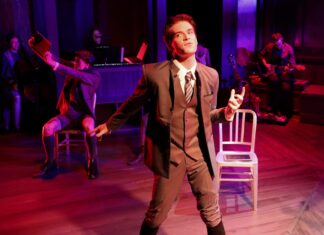Coming right off the incredibly successful 3D re-release of The Lion King in theatres, Disney has just released the Diamond Edition of the film on Blu-Ray. I wrote extensively about how successful the Diamond Edition of Beauty and the Beast was, and it was with this in mind that I eagerly tore into my copy of the Lion King. Much like that release, there are several discs and multiple options as to how to view the film. First and foremost is the 3D Blu-Ray, followed by the standard Blu-Ray, a DVD and a Digital Copy.
It is amazing to me just how successful Disney is at these conversions to 3D. The animation was already stunning in two dimensions, but adding that extra layer elevates the film to a whole other level. We all know the iconic moments such as the Circle of Life opening number, the stampede, and the final battle. It’s a whole different experience to feel as if you are in the film as these events occur. Disney is single-handedly justifying the existance of 3D televisions.
As for the bonus content, it’s not quite as comprehensive as the Beauty and the Beast set, but there’s still a significant amount of fascinating footage to be found. One feature that I found particularly interesting is something they call “Disney Second Screen.” To watch the film in this mode, you sync up the film with your laptop or iPad and watch the film on your television while simultaneously watching bonus material related to the sequence on whichever device you sync with. It’s a very clever way of avoiding picture-in-picture but still providing the audience with insight into the individual scenes as they play.
There’s also a terrific commentary track with co-directors Roger Allers and Rob Minkoff along with producer Don Hahn. It’s an extremely informative track, providing all sorts of anecdotes, history and insight into the production. Other features include a silly blooper and outtake reel running just under four minutes. They took outtakes from the original audio recordings and animated a series of “bloopers” to the tracks. In theory, this should have been really funny. As is, it doesn’t feel like they had enough material to warrant the effort it took to put something like this together. Overall, this felt redundant to features that Pixar has done before, and done better.
The real meat of the set can be found in two fascinating documentaries, “Pride of the Lion King” and “Lion King: A Memoir-Don Hahn.” The first is an overall analysis of the film’s place in society and what it took to get it there. They discuss the entire history of the project, from Jeffrey Katzenberg’s initial germ of an idea to opening weekend, and even on to the Broadway play. It’s relatively comprehensive and while there wasn’t a lot of material that wasn’t already public knowledge, it’s still a treat to hear this material presented by those who lived it. The second feature is a little more personal, and is basically Don Hahn’s footage during the time the film was being created. He documents the crew in production, their field trip to Africa for research, the presence of African wildlife at the studio for study, etc. Far less “produced,” this feature creates a fly-on-the-wall mentality that I really enjoyed.
Other extras include five deleted scenes, with introductions from the filmmakers as to why they were cut, a fully animated new musical number taken from the Broadway play, and a terrific interactive gallery of character designs, visual development, storyboards and layouts & backgrounds. While it’s always interesting to see deleted scenes from a classic film, none of these sequences are missed, and I support their decision to remove all of them. Particularly awkward is a musical number for Mufasa called “King of the Wild” that just feels out-of place and out-of-character. It’s a lighthearted moment that doesn’t flow with the sequences that would have bookended it, and frankly, the song just isn’t very good.
Overall, this was a really terrific set for a phenomenal film. However, I just can’t get as excited about it as I was with the Beauty and the Beast release. I feel like to much time was devoted to the Broadway play, and there wasn’t enough new material to get excited about. I’m sure if I hadn’t watched Beauty first, I would probably be more enthusiastic about this set. As is, I still can’t recommend purchasing this enough. The film itself is the best it’s ever looked and sounded. When it comes to home entertainment, I can’t wait to find out where Disney goes from here.













